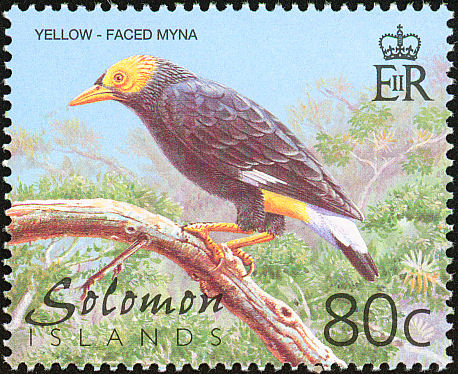|
| 질의: description | 결과: 9478번째/10150 | |
Long-tailed Myna (Mino kreffti) - Wiki
| 제목: | Long-tailed Myna (Mino kreffti) - Wiki
| |

| 해상도: 458x374
파일크기: 92687 Bytes
등록시간: 2008:01:04 10:30:34
|
Long-tailed Myna
From Wikipedia, the free encyclopedia
Order: Passeriformes
Family: Sturnidae
[Photo] Long-tailed Myna Mino kreffti. Source: Bird stamps from Solomon Islands, 2001. URL: www.birdtheme.org/country/solomon.html
The Long-tailed Myna (Mino kreffti) is a member of the starling family. It is resident in the Bismarck Archipelago and northern Solomon Islands.
Its binomial name commemorates Gerard Krefft, Australian zoologist and palaeontologist.
Description
This is a very large myna, 29-32 cm in length, with mainly purple-glossed black plumage. It has bright orange-yellow patches of naked skin around each eye. It has a yellow lower belly and white wing patches, which are obvious in flight. The rump and undertail are white and the strong bill is bright yellow.
Behaviour
The Long-tailed Myna nests in tree holes, often in palms. The eggs are pale blue with delicate reddish or grey markings.
This myna is arboreal, and is found alone or in pairs in open lowland forests and plantations. It feed mainly on fruit. It is a conspicuous and vocal species with a wide range of whistles and squawks.
http://en.wikipedia.org/wiki/Long-tailed_Myna
| The text in this page is based on the copyrighted Wikipedia article shown in above URL. It is used under the GNU Free Documentation License. You may redistribute it, verbatim or modified, providing that you comply with the terms of the GFDL. |
|
^o^
동물그림창고 똑똑전화 누리집
^o^
|
|